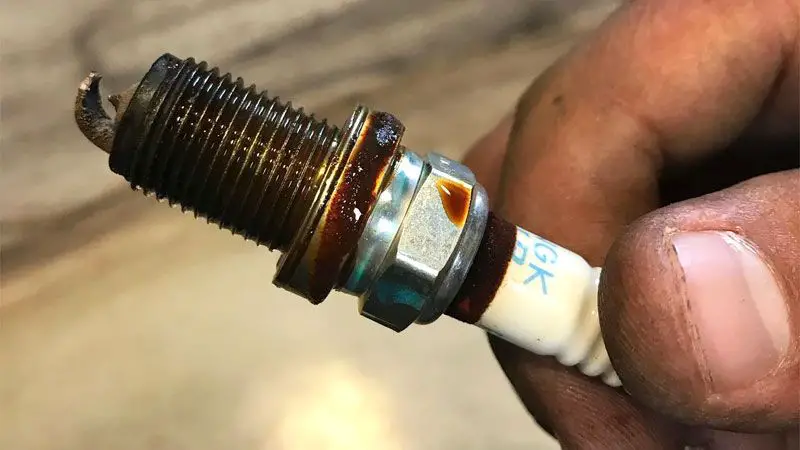Having oil on spark plugs is a common issue that can affect engine performance. While new spark plugs are the best solution, there are some steps you can take to try cleaning oil fouled plugs and restore them to working order.
Page Contents
What causes oil on spark plugs?
There are a few common causes of oil fouling on spark plugs:
- Worn valve guide seals – Oil can leak past worn seals and get into the combustion chamber
- Worn piston rings – Allows oil to get past the rings into the combustion chamber
- Excessive oil consumption – An engine burning too much oil will foul the plugs
- Incorrect spark plug heat range – Using a plug that doesn’t get hot enough can lead to fouling
- Extended idling/low speed driving – Causes oil residue buildup on plugs
Cleaning oil fouled spark plugs
If your spark plugs have light oil fouling, you may be able to clean and reuse them. Here are some tips for cleaning oily plugs:
- Remove the plugs from the engine and inspect the condition. Heavily fouled plugs may need replacement.
- Clean the plug exterior and electrode area with a wire brush or spark plug cleaning tool to remove deposits.
- Spray the plug with a carburetor or brake parts cleaner. Allow it to soak for 10 minutes.
- Rinse the plug off with additional cleaner spray and allow to fully dry.
- Test the plug by reinstalling it and starting the engine. If misfiring continues, new plugs are needed.
Cleaning can temporarily restore plugs to service but may not be a permanent fix for oil fouling issues. The underlying cause should be addressed.
How to prevent oil fouling of spark plugs
Here are some tips to help prevent oil fouled spark plugs:
- Use the correct spark plug heat range for your engine and operating conditions.
- Ensure valve guide seals and piston rings are in good condition, not worn out.
- Fix any oil consumption issues such as worn valve guides, pistons, etc.
- Avoid extended idling and short trips to help prevent buildup.
- Use high quality synthetic oil and keep it changed at proper intervals.
- Install splash shields to protect from oil splatter in valve cover.
- Clean out spark plug wells before installing new plugs to remove oil residue.
When to replace spark plugs
If the plugs remain fouled after cleaning or have worn electrodes, they will need replacement. Recommended spark plug replacement intervals vary by manufacturer, but general guidelines are:
| Vehicle Type | Replacement Interval |
|---|---|
| Standard engines | Every 30,000-50,000 miles |
| High performance engines | Every 15,000-20,000 miles |
| Small engines (mowers, chainsaws, etc) | Every 50 hours of runtime |
It’s a good idea to check spark plugs periodically and replace them at the first sign of fouling, excessive wear or when they exceed the recommended service interval.
Choosing new replacement spark plugs
When selecting new plugs, make sure to choose the proper heat range for your engine. Consult your owner’s manual for the manufacturer recommended plug type. Using the wrong heat range can lead to premature fouling or overheating issues.
It’s advisable to replace all plugs at the same time to maintain optimal performance. Purchase plugs from a reputable brand and avoid cheap generic plugs that can cause performance issues.
Conclusion
Oil fouled spark plugs can be cleaned temporarily in some cases. However, replacement is needed if the fouling is excessive or plug electrodes are worn. Address any underlying oil consumption issues to prevent repeated fouling. With the proper heat range plugs and well-maintained engine, oil fouling on plugs can be avoided in most cases.
